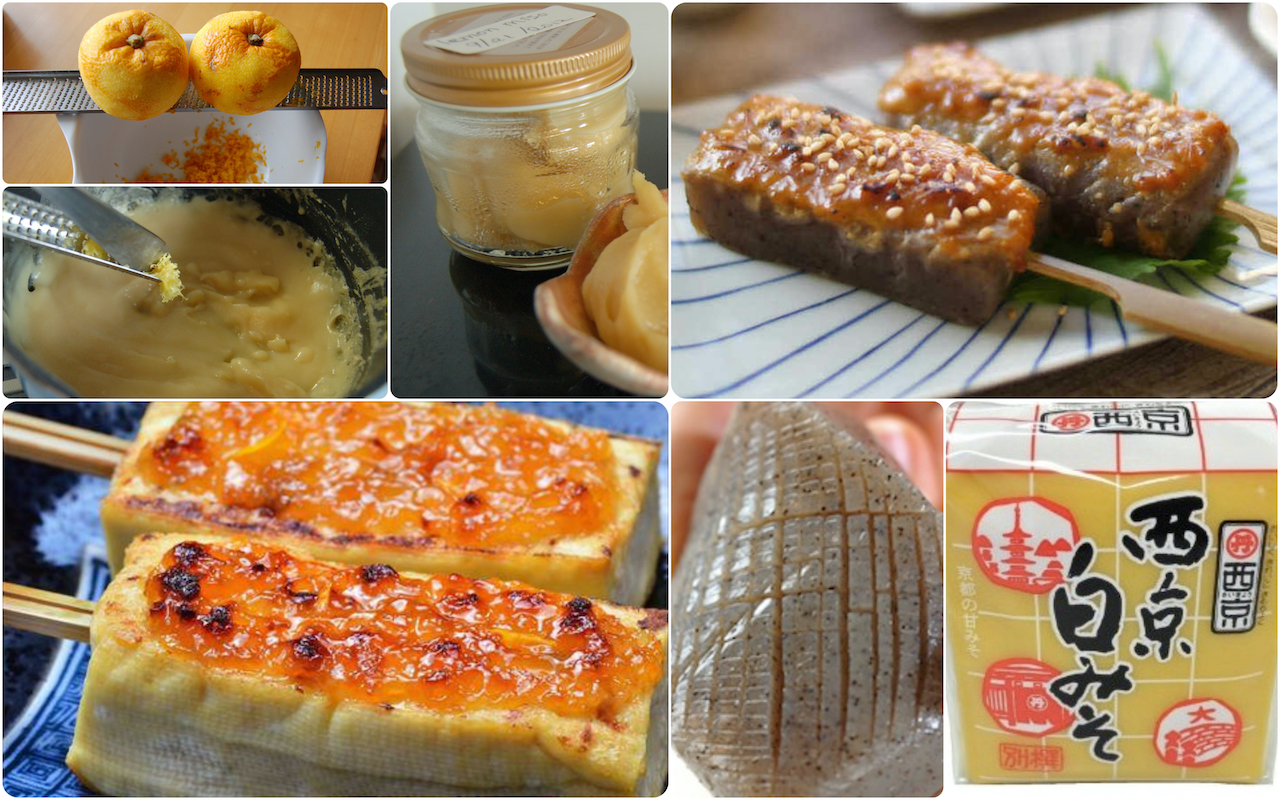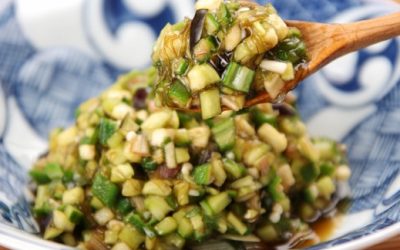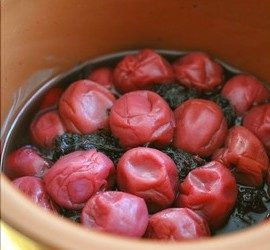
Kitchen Culture Cooking Club
EXPLORE and PRACTICE Japanese cooking in your own kitchenAbout Kitchen Culture Cooking Club
Welcome to the Kitchen Culture Cooking Club, a community space providing encouragement to those who want to EXPLORE and PRACTICE Japan’s washoku wisdom in their own kitchens.
To facilitate this, themed projects will be posted to this page periodically. Project Assignments and links to relevant reference material stored on this site will be posted to this page. Anyone, anywhere in the world, with a sincere interest in Japanese food culture is welcome to browse the contents of this page and then replicate the themed project in their own kitchen.
For those who wish to display-and-discuss their projects with like-minded people, I invite you to join the KITCHEN CULTURE Cooking Club Facebook Group (formerly the TSUDOI Project), an interactive community space.
Project Yuzu Miso

季節のゆず味噌・Kisetsu no Yuzu Miso
Seasonal Citrusy Miso Sauce
The Japanese delight in bringing elements — often fresh produce — of each season to table. Yuzu citrus fruits ripen from green to golden yellow as autumn turns to winter. As yuzu ripen, the peels become especially fragrant and the tart juice mellows a bit. One way of capturing the essence of December and bringing it to table is to infuse light/white miso with yuzu zest to make a sauce. This YUZU MISO sauce can be a dip for raw vegetables, be transformed into a salad dressing by adding a bit of olive oil and a drizzle of rice vinegar, or slathered on tōfu, konnyaku and/or vegetables that are then briefly broiled, dengaku style.
This PROJECT YUZU MISO is about making your own citrusy-flavored miso sauce and using it in creative ways. If you can source real yuzu you are in for a treat. If you can’t try a mixture of orange, lemon and grapefruit to approximate the sweet, slightly bitter, tart flavors of yuzu. Be sure your fruit is organically grown; you do not want to consume the zest of fruit that has been sprayed with chemicals.
DOWNLOAD a recipe for ゆず味噌・YUZU MISO
After zesting fresh yuzu, the remaining fruit can be used to perfume your bath. In fact, the Japanese do just that at the start of winter, on TŌJI which, most years, coincides with December 22. The custom is called YUZU YU ゆず湯. Find out more about this at my Kitchen Culture blog.
Recipes and Resources
Stock (Dashi)
Dashi stock is essential to making soups and simmered or stewed dishes. Dashi is also used when making many egg dishes and all sorts of sauces, dips and dressings. Using good dashi will make a noticeable difference in the outcome of so many dishes you prepare.
Click to download recipes for (vegan) Kelp Alone Stock or Standard Sea Stock + Smoky Sea Stock
How to Cook Rice
In Japanese, the word for cooked rice, ご飯 GOHAN, is the same as the word for a meal, ご飯 GOHAN. Indeed rice is central to the meal. Download the Rice with Mixed Grains recipe.
How to Prepare Sushi Rice
Sushi dishes are made with rice that has been seasoned (with sweetened vinegar) AFTER being cooked. Download the Classic Sushi Rice recipe.
Quick Pickles
The Japanese enjoy a wide variety of tsukémono pickles, many can be assembled quickly and are ready to eat within a short time.
Download a recipe for Quick-Fix Hakusai Cabbage.
Yamagata Dashi, a condiment
Chopped eggplant, cucumbers, okra and herbs such as shiso and myōga make salsa-like Dashi 山形だし Yamagata Dashi Somewhere between a salsa and chutney, Yamagata’s summertime signature dish Dashi is a refreshing mixture of chopped vegetables and herbs. It often tops cubes...
Okra
TRIM (left)・SALT-RUB (top right)・FLASH-BLANCH (center right)・STEEP (bottom right) OKRA オクラ The Japanese technique for preparing okra heightens its color (jade green) and flavor (reminiscent of green beans and/or asparagus) while limiting its sticky texture. There are...
Hiya Yakko Chilled Tōfu with Condiments + Umami Essence
HIYA YAKKO 冷奴 When you see an item on a menu being described as HIYA, it means that dish will be served chilled. Pictured above is classic Hiya Yakko, blocks of cold tōfu garnished with grated fresh ginger, chopped scallions and curly flakes of smoky, dry-roasted...
Uméboshi
Uméboshi 梅干し and aka-jiso leaves After many weeks of bathing submerged in salty-sour, rosy-colored umézu this year’s plums are ready to be air-dried... the final stage of plum work (umé shigoto). What’s needed is a string of dry days, what’s known as umé no doyō-boshi...
Like us on Facebook for the freshest content or follow Taste of Culture on Twitter.




